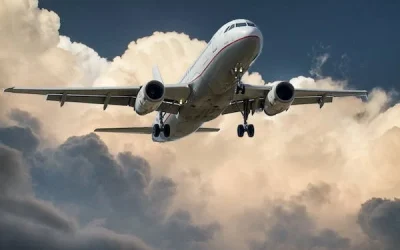linkedin.com/in/shadrachswantekambai

Revenue leakages within the airline industry encompass scenarios where airlines forfeit potential earnings due to inefficiencies, errors, or fraudulent activities. A classic example arises when airlines fail to optimize their pricing strategies, leading to unoccupied seats on flights that could have been sold at higher fares. Furthermore, mishandling ticket refunds, baggage fees, or loyalty program credits can result in financial setbacks. Another avenue for revenue leakages emerges when passengers exploit loopholes in fare regulations, such as booking round-trip tickets but utilizing only the outbound portion, thereby depriving the airline of prospective revenue. These instances underscore the paramount significance of scrupulous revenue management and unwavering operational diligence within the fiercely competitive airline sector.
What is Airline Revenue Leakage?
In his book, “Introduction to Airline Revenue Integrity,” Paul Rose offers a concise definition of revenue leakage as “the variance between the anticipated revenue from airline bookings and the actual amount received” (Sigala, 2016). Rose underscores that this variance is shaped predominantly by technological advancements, consumer behaviors, and the practices of airline distributors. This comprehensive definition encapsulates the core essence of revenue leakages, emphasizing that without proactive measures to address their sources, revenue loss becomes an unavoidable consequence for airlines.
Sources of Revenue Leakages
Operational Inefficiencies:
Inefficient flight operations, including flight delays and cancellations, can result in compensation payouts, customer dissatisfaction, and lost revenue.
Fraudulent Activities:
Fraudulent activities, such as ticket refund fraud and credit card chargebacks, can significantly impact an airline’s bottom line.
Ticket Distribution Costs:
Airlines grapple with substantial revenue leakage due to ticket distribution costs. Global distribution systems (GDS) and online travel agencies (OTAs) levy significant fees for facilitating ticket sales, potentially eroding profits substantially when not effectively managed.
Overbooking and Underbooking:
Airlines routinely face the challenge of optimizing seat occupancy. Overbooking can lead to revenue losses through compensation paid to passengers who are involuntarily bumped from flights while underbooking results in missed revenue opportunities.
Baggage Mishandling:
Mishandled baggage can lead to compensation claims and loss of customer loyalty, impacting an airline’s revenue and reputation.
“In the soaring skies of aviation, our unity and vigilance must be unwavering. Together, as airline owners and dedicated employees, we hold the power to seal the gaps that bleed revenue from our industry. Let us be relentless in our pursuit to plug every leak, for in these efforts lies the lifeline of our business. With collaboration and diligence, we can ensure our flights remain prosperous, our wings stay strong, and our dreams reach new horizons. Let our commitment to excellence be the wind beneath our wings, carrying us towards a future of limitless possibilities.”
Cliqjets Consulting
Mitigation Strategies
Mitigating revenue leakages in the airline business requires a strategic approach. Implementing robust pricing models, optimizing seat inventory, monitoring ticket refunds, and preventing fraud are key steps. Employing advanced data analytics and auditing systems helps identify and address potential leakages, ensuring sustained profitability in this competitive industry PricewaterhouseCoopers (2017).
Operational Inefficiencies:
To mitigate operational inefficiencies in the airline industry, a proactive strategy involves enhancing operational excellence. This entails investing in fleet modernization and maintenance and adopting predictive maintenance technologies to minimize unexpected delays and cancellations. Furthermore, optimizing flight scheduling, crew management, and ground operations through data-driven insights and automation can improve overall efficiency. Continuous staff training, rigorous safety protocols, and proactive risk management strategies are also essential to ensure streamlined operations. These measures collectively contribute to reducing operational inefficiencies, enhancing passenger satisfaction, and preserving the airline’s profitability and reputation.
Fraudulent Activities:
To mitigate fraud and revenue leakage in the airline industry, a multifaceted strategy is essential. Implementing robust fraud detection systems, fortified by cutting-edge technologies like machine learning and artificial intelligence, can effectively identify and flag suspicious transactions or patterns in real time. Employee training programs are crucial to cultivating a vigilant and fraud-aware workforce. Additionally, establishing a rigorous internal control framework with stringent access controls, regular audits, and oversight mechanisms can deter internal fraud. Collaborating with payment processors and financial institutions to validate transactions and combat fraudulent activities at their source is vital. Moreover, cultivating strong partnerships with global law enforcement agencies can aid in pursuing legal action against fraudsters. Regularly reviewing and updating security protocols and measures to stay ahead of evolving fraud tactics is essential to safeguard airline revenue effectively.
Ticket Distribution Costs:
To curtail ticket distribution costs, airlines can implement a multifaceted mitigation strategy. Encouraging passengers to book directly through the airline’s website and loyalty programs can reduce reliance on third-party channels, lowering associated fees. Renegotiating contracts with global distribution system (GDS) providers and online travel agencies (OTAs) to secure more favorable terms can also help cut costs. By optimizing these distribution channels and fostering direct bookings, airlines can significantly mitigate the impact of ticket distribution expenses on their profitability.
Overbooking and Underbooking:
To alleviate overbooking and underbooking challenges, airlines can implement advanced revenue management systems. These systems utilize predictive analytics to optimize seat allocation, ensuring a balanced approach. By analyzing historical data, demand patterns, and market conditions, airlines can make more accurate booking decisions. This strategy helps minimize the financial impacts of overbooking compensation and lost revenue due to underbooking, enhancing operational efficiency and profitability.
Baggage Mishandling:
To mitigate baggage mishandling in the airline industry, a comprehensive strategy is vital. Airlines should invest in advanced baggage handling systems and tracking technologies to enhance accuracy and reduce errors in baggage handling. Additionally, rigorous staff training programs can instill a culture of accountability and precision. Prompt compensation for affected passengers is crucial to maintain customer satisfaction and trust. Regularly reviewing and upgrading baggage handling processes and equipment, along with implementing stringent quality control measures, will further minimize mishandling incidents, ensuring a smoother and more reliable travel experience for passengers.
Conclusion
The airline industry is a complex and highly competitive sector where profit margins can be razor-thin. To thrive in this demanding environment, airlines must carefully manage their revenue streams and minimize revenue leakages. Therefore, mitigating revenue leakages in the airline business is essential for maintaining profitability and competitiveness. Airlines must adopt a multifaceted approach that encompasses cost reduction, technology investment, fraud prevention, and operational optimization. By addressing these causes of revenue leakage, airlines can navigate the turbulent skies of the industry more effectively, ensuring a smoother journey for both their bottom line and their passengers.
References
OpenAI. (2023, August). ChatGPT. Chat.openai.com. https://chat.openai.com
PricewaterhouseCoopers. (2017). How can airlines return to profitability? By following these 5 steps. PwC. https://www.pwc.com/us/en/industries/consumer-markets/library/how-can-airlines-return-to-profitability.html
Sigala, M. (2016). An introduction to airline revenue integrity. Journal of Revenue and Pricing Management, 15(1), 82–83. https://doi.org/10.1057/rpm.2016.1
Support
With your donations, we can accomplish great things.”






0 Comments